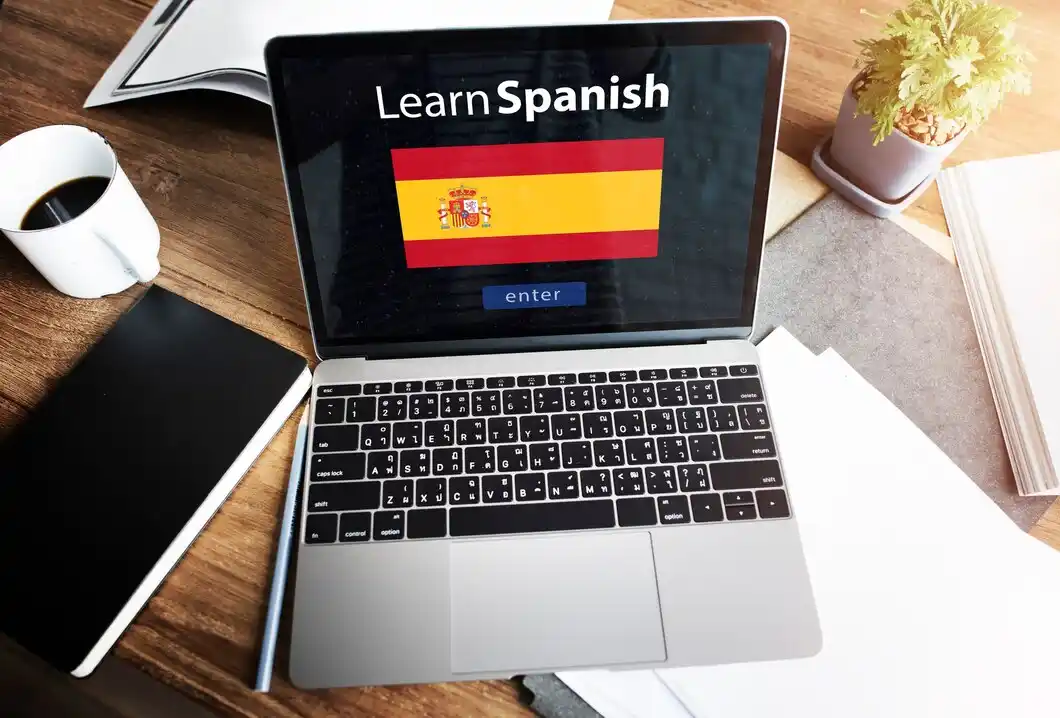The Education Blog

How to Learn a New Language Faster: Best Strategies
Learning a new language can be an exciting and rewarding journey, but it often feels like an overwhelming task. Many people struggle with memorising vocabulary, understanding grammar, and gaining fluency. However, with the right fluency strategies and the best language learning tips, you can significantly speed up the process and become confident in your new language.
Whether you’re learning for travel, work, or personal growth, this guide will provide practical techniques to help you learn a new language fast and retain what you’ve learned more effectively.
1. Set Clear and Realistic Goals
Setting clear and realistic goals helps provide direction and motivation. Define specific, achievable objectives to stay focused and track progress effectively.
Define Your Language Learning Objectives
Before diving into learning a language, set specific and achievable goals. Ask yourself:
- Why do I want to learn this language?
- What level of fluency do I need?
- How much time can I dedicate each day?
Setting goals like “Learn 50 new words per week” or “Hold a basic conversation in three months” gives you a roadmap to success.
Break Down the Learning Process
Divide language learning into manageable tasks:
- Vocabulary building
- Grammar understanding
- Listening and pronunciation
- Speaking and writing practice
Focusing on one area at a time prevents overwhelm and ensures steady progress.
Set SMART Goals
Use the SMART framework to create language learning goals:
- Specific – Focus on a clear objective, e.g., “Learn 10 new verbs weekly.”
- Measurable – Track progress with vocabulary lists or language apps.
- Achievable – Set goals that match your skill level and time availability.
- Relevant – Choose objectives that align with your reasons for learning.
- Time-bound – Assign deadlines to keep motivation high.
2. Immerse Yourself in the Language
Immersing yourself in the language accelerates learning and improves fluency. Surround yourself with native speakers, media, and daily practice to enhance comprehension and communication skills.
Surround Yourself with the Language
The more exposure you have, the faster you learn. Try these immersion techniques:
- Change your phone, apps, and social media to the target language.
- Listen to podcasts and music in the language.
- Watch movies and TV shows with subtitles.
- Read news articles, blogs, and simple books in the new language.
Think in Your Target Language
Train your brain to think in the language instead of translating from your native language. Start by labelling household objects and forming simple sentences in your mind throughout the day. Narrate your daily activities in the language to develop fluency.
Use the Language in Real-Life Situations
Applying what you learn in real conversations solidifies your knowledge. Try:
- Ordering food in a restaurant using the new language.
- Writing grocery lists and notes in the language.
- Engaging with native speakers whenever possible.
3. Use the Best Language Learning Tools

Choosing the right language learning tools can make the process more effective and engaging. Apps, online courses, flashcards, and AI tutors can help improve vocabulary, pronunciation, and grammar.
Language Apps and Online Courses
Technology has made learning a language more accessible than ever. Some of the best apps include:
- Duolingo – Great for vocabulary and daily practice.
- Babbel – Structured lessons with grammar explanations.
- Anki – Flashcard system for memorising new words.
- Pimsleur – Focuses on conversational fluency through audio learning.
- Rosetta Stone – Uses immersion techniques for learning naturally.
Join Online Language Communities
Engage with native speakers and fellow learners through platforms like:
- Tandem and HelloTalk for language exchange.
- Reddit language learning forums for tips and motivation.
- Italki and Preply for one-on-one tutoring.
- Clubhouse or Discord language groups for real-time conversations.
4. Master the Art of Speaking and Listening
Speaking and listening are crucial for language fluency. Practice with native speakers, listen to podcasts, watch movies, and engage in real conversations to improve comprehension and pronunciation.
Practice Speaking from Day One
Many learners wait too long to start speaking. Overcome the fear of mistakes and start using simple sentences immediately.
- Join conversation groups or find a language partner.
- Record yourself speaking and track your progress.
- Repeat words and phrases out loud to improve pronunciation.
- Participate in virtual language meetups.
Listen to Native Speakers Daily
Listening helps improve comprehension and pronunciation. Try:
- Watch YouTube videos in your target language.
- Listening to audiobooks and news reports.
- Shadowing technique – repeating after a native speaker to mimic their accent and intonation.
- Listening to radio stations or podcasts while commuting.
5. Learn Grammar Naturally

Instead of memorizing rules, absorb grammar through reading, listening, and practical use. Contextual learning, like conversations and stories, helps internalize structures naturally over time.
Focus on Practical Grammar
Instead of memorising complex grammar rules, learn patterns through example sentences and real-life usage.
- Identify the most commonly used tenses first.
- Use spaced repetition apps to reinforce sentence structures.
- Read children’s books and easy articles to see grammar in context.
- Take note of common phrases instead of individual words.
Don’t Fear Mistakes
Making errors is part of learning. Keep a notebook for corrections and improve gradually. Learn from mistakes instead of letting them discourage you. Practising regularly in a low-pressure environment builds confidence.
6. Expand Your Vocabulary Efficiently
Focus on learning relevant words and phrases through context rather than memorizing long lists. Use flashcards, apps, and real-life exposure to reinforce new vocabulary effectively.
Use Flashcards and Mnemonics
Retain new words faster with:
- Flashcards (Anki or Quizlet) with images and example sentences.
- Mnemonics – Create stories or associations to remember difficult words.
- Write words on sticky notes and place them around your home.
- Learning word families and synonyms together to expand vocabulary.
Learn the Most Useful Words First
Not all words are equally important. Focus on:
- The 1000 most commonly used words.
- Everyday expressions and phrases.
- Vocabulary relevant to your personal interests and goals.
- High-frequency verbs, adjectives, and connectors for smoother conversations.
7. Read and Write Every Day
Make reading and writing a daily habit to strengthen your language skills. Start with simple texts, keep a journal, and gradually progress to more complex materials.
Start with Simple Reading Materials
Reading boosts comprehension and grammar naturally. Try:
- Children’s books and graded readers.
- Short news articles or blogs in the target language.
- Bilingual books with side-by-side translations.
- Social media posts and online discussions.
Keep a Language Journal
Writing in the language daily helps reinforce learning. Start with:
- A diary entry about your day.
- Summarising what you learned that day.
- Writing social media posts in the new language.
- Composing emails or messages in the language.
8. Stay Consistent and Motivated

Consistency is key to language learning success. Set a routine, celebrate small achievements, and stay motivated by engaging with content that interests you.
Create a Study Routine
Consistency is key. Dedicate at least 20-30 minutes daily rather than cramming once a week. Use reminders and habit trackers to stay on course.
Find Ways to Make Learning Fun
Enjoy the process by:
- Playing language-based games and quizzes.
- Singing along to songs in the language.
- Reading comics or joke books for casual learning.
- Cooking recipes from a country where the language is spoken.
Track Progress and Celebrate Milestones
Monitor your growth by:
- Setting short-term and long-term goals.
- Testing yourself with language proficiency quizzes.
- Rewarding yourself when reaching key milestones.
- Recording yourself speaking at different stages to see improvement.
Learn a New Language and Upgrade Your Skills
Mastering a new language doesn’t have to take years. By following these best language learning tips and applying effective fluency strategies, you can learn a new language fast and with confidence. The key is consistency, immersion, and active use of language in real-life situations.
No matter what language you’re learning, make it part of your daily life, embrace mistakes, and enjoy the journey. With the right approach, fluency is within your reach!









